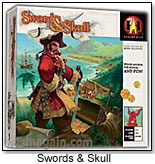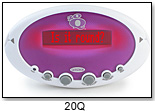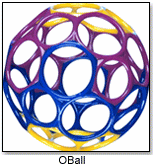
December 28, 2025


| "If you have a great idea and a great price but you can´t explain what it is to somebody in about three seconds, it´s probably not that great." —David Silverglate, of Rhino Toys |
1. Packaging
The allure of toys and games is primarily tactile, visual and interactive. What causes a consumer to choose a particular product before they’ve even played with it? According to David Silverglate, president and CEO of Rhino Toys (ToyDirectory), it’s the packaging. “If you have a great idea and a great price but you can’t explain what it is to somebody in about three seconds, it’s probably not that great.”
Retailer Christine Osborne, co-owner of Charleston, S.C.-based Wonder Works, Your Family Toy Store, notes that "try me" packaging affords potential buyers a much more complete introduction to a new product.
2. Do Your Homework! 
Linda Cox, brand manager for Avalon Hill, maker of the classic Axis and Allies board game, suggests that the key to success is, “a combination of homework and execution — know your market, do market research, shop the market, know what the trends are.”
Cox employs a “need gap analysis” to identify the specific needs of her target audience and to determine if they are being fulfilled by the market. This past March, Cox successfully launched the board game Sword & Skull — a product that addresses the market’s need for a game simple enough for a novice, yet complex enough for a seasoned gaming veteran.
3. New Dog, Same Trick
“When you have a tried and true play/usability pattern, and you find a way to make a product that capitalizes on that pattern — yet brings something unique and imaginative to it — it generally results in a big hit,” according to Patti Saitow, vice president of global marketing services for Radica USA Ltd. 
Saitow cites Radica’s highly successful 20Q. Based on the childhood game in which a player is allowed to ask an opponent 20 questions to ascertain a particular noun that the opponent is visualizing, 20Q uses the algorithmic functions of a computer to “read” players’ minds, in 20 questions or less.
4. Playability 
The ideal product is aesthetically appealing and ergonomically sound, but a successful toy can benefit from added play value as well. An “open-ended” design adds play value because it can be used in new and different ways.
Silverglate makes the case for open-ended products with his recent invention, the O-Ball. “If they’re going to play with it over and over again, even after the novelty wears off, there’s still going to be something new to do with it.”
5. Go With Your Gut
Savvy packaging, market research, design and concept aside, if a toy does not resonate with its target market, it will not be successful. So how do you choose the right product? Osborne offers sage but simple advice: “If you know who you are, what you like and what you can sell, and if you find something that excites you, 99% of the time you will be able to sell it.”
Those aren’t bad odds.
Copyright © 2025 TDmonthly®, a division of TOYDIRECTORY.com®,
Inc.